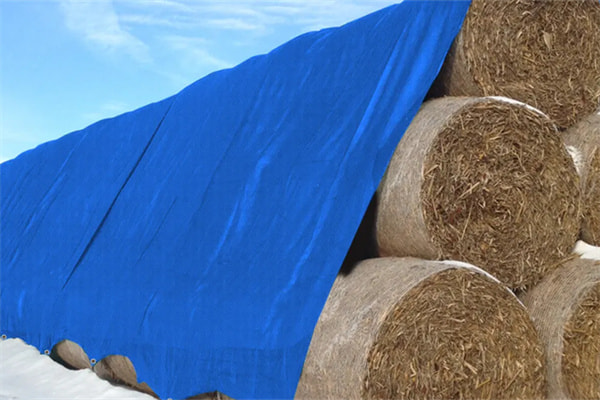Farmers know that hay bales are a quintessential resource for farm animals and wildlife, supplying quintessential nutrition during the off-season. Without protection, hay is susceptible to harm from weather, insects, and mold. Hay tarps are quintessential in defending hay bales from the elements. Here in this article, we are going to tell you some of the matters that you need to know about hay tarps.
What is a hay tarp?
A hay tarp is a cover that is designed to cover hay bales in order to guard them from weather. It’s constructed of 100% waterproof polyethylene, and it will withstand rain, snow, wind and sun while keeping the hay dry and healthy. No matter what dimension your hay bale is, hay tarps are available in all shapes and sizes so they can be a very useful piece of equipment for any farmer.

Key Attributes of Hay Tarps
Durability
Durability is another key feature of hay tarps. They need to withstand the hostile outdoor storage conditions, like exposure to extreme weather and possible wear and tear from the hay bales themselves. Tarps are generally made using tough fibers or material resistant to tearing. Others are even UV-treated to prevent breakdown over time, especially with constant exposure to sunlight. This durability allows for the tarp to be used year after year, giving your hay long-term protection.
Waterproof
Hay tarps are highly water-resistant too. Hay tarps are primarily treated fabric or waterproof plastics. The waterproofness of hay tarps is applicable due to the fact they create an impenetrable barrier between rain or snow and the hay bales. An effective hay tarp will maintain the hay dry even during heavy rainfalls, stopping moisture-provoked mold and rot.
UV Treatment
Hay tarps are UV-protected to keep the hay away from the harmful effects of sun. This aspect is important since prolonged exposure to sunlight can decrease the nutritional content of the hay, consequently reducing its feeding value to animals.
Uses of Hay Tarps
Protection from Weather
The most important use of hay tarps is to protect hay bales from rain. Where it rains every day, hay tarps are inevitable. They cover the hay so that it will not become wet, which could cause it to spoil. Where it snows, tarps not only prevent snow from falling on the hay, but also prevent the hay from becoming compressed by the weight of snow. In case of sunlight, the tarp blocks the entry of UV rays, delaying the fading process of the hay and keeping it nourished. When it’s windy, it keeps the hay firm in its position and doesn’t allow it to disintegrate inside the warehouse.
Storage and Transportation
Tarps on hays also work during both transport and storage. In storage, tarps are a cover for the bales of hay, whether or not in the field or the barn. Tarps maintain the hay clean, dust-free, and devoid of debris, and they act as a protective barrier against pests that are attracted to the hay. In haulage of hay bales, tarps are used to secure the load. They keep the hay bales firm while in transit and also protect them from rain or snow that may be encountered along the way.
Building Temporary Shelters
In some circumstances, hay tarps can also be used to build temporary animal shelters or equipment storage. For example, in an emergency situation where a barn has burnt down, a large hay tarp can be used to build a temporary animal shelter in a short while. It can also be used to cover and protect farm equipment temporarily kept outside from the weather.
Use and Maintenance of Hay Tarps
When using a hay tarp, make sure you secure it well to the hay bale. You can use a PVC tarpaulin with grommets so you can tie it down, and this will prevent the tarp from being blown away and keep it well covered. Check the tarp now and then for any damage, such as holes, tears, or wear. Any damage discovered must be repaired immediately. Holes can be repaired using a tarp repair kit, which usually has a sticky patch. Larger tears can entail more extensive repairs or even tarp replacement.
In addition, regularly wash the tarp. Remove any debris, dirt, or hay residue that might also have collected on the surface. This will not only keep the tarp in correct condition, but it will also prevent mold from growing on the tarp that could otherwise be passed on to the hay. When not in use, preserve the tarp in a cool dry area to prevent deterioration.
In general, a hay tarp is a worthwhile investment for any cattle proprietor or farmer. Its waterproof, UV-resistant, and long lasting design makes it a great product for protecting hay bales from moisture and the elements. With a good-quality hay tarp, you can be sure that your hay will remain fresh, be full of nutrients, and be free from mold or pests. The use of the appropriate tarp can significantly add to the shelf life and quality of your hay. Our organization offers PVC-Planes to over 30 organizations across the globe. Feel free to inquire.

